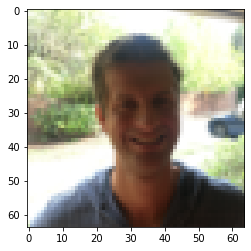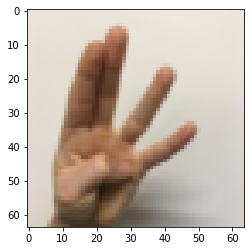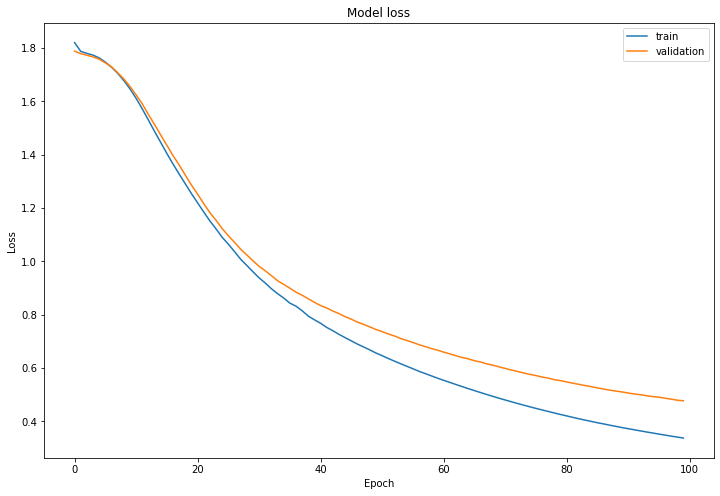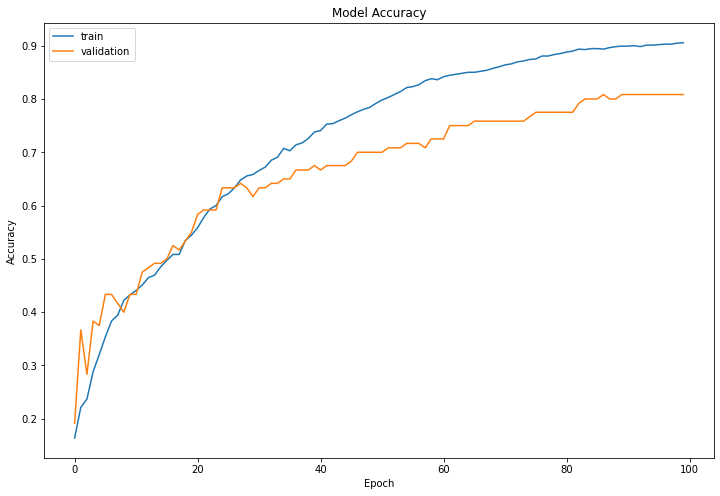{'loss': [1.81948983669281,
1.7866532802581787,
1.7793265581130981,
1.77281653881073,
1.7623060941696167,
1.7465872764587402,
1.727473497390747,
1.7047957181930542,
1.6774042844772339,
1.6463961601257324,
1.6108105182647705,
1.5713599920272827,
1.5294722318649292,
1.4865756034851074,
1.4456082582473755,
1.404129147529602,
1.3647756576538086,
1.326806664466858,
1.2904385328292847,
1.253509283065796,
1.218967318534851,
1.1845623254776,
1.1511088609695435,
1.121297001838684,
1.0895981788635254,
1.0641520023345947,
1.0362637042999268,
1.007636308670044,
0.984308660030365,
0.9606931209564209,
0.9377419948577881,
0.9183765053749084,
0.8969680070877075,
0.8786231875419617,
0.8622653484344482,
0.8430467844009399,
0.8316110372543335,
0.8145042657852173,
0.7943885326385498,
0.7805250883102417,
0.7673527598381042,
0.7519320845603943,
0.7394407987594604,
0.7258064150810242,
0.7135477662086487,
0.7014078497886658,
0.68934565782547,
0.6786521673202515,
0.6677185893058777,
0.6560553312301636,
0.6460168361663818,
0.6356738209724426,
0.6255865693092346,
0.6160153150558472,
0.6064593195915222,
0.5971838235855103,
0.5874453186988831,
0.5790672302246094,
0.5704237222671509,
0.5618683695793152,
0.5537489652633667,
0.5459328889846802,
0.5380069017410278,
0.5302292704582214,
0.5225710868835449,
0.5152164697647095,
0.5078424215316772,
0.5006593465805054,
0.4936710000038147,
0.48668015003204346,
0.48004111647605896,
0.47341179847717285,
0.46695125102996826,
0.4606838524341583,
0.45455649495124817,
0.4484941065311432,
0.4427187442779541,
0.43690988421440125,
0.43131959438323975,
0.4256468117237091,
0.4202720522880554,
0.4148544669151306,
0.40955156087875366,
0.40451714396476746,
0.399653822183609,
0.3946843445301056,
0.3902546465396881,
0.3855292499065399,
0.38111716508865356,
0.3765600025653839,
0.37237632274627686,
0.36830776929855347,
0.36407360434532166,
0.35997268557548523,
0.3561058044433594,
0.3520120680332184,
0.34831100702285767,
0.34443145990371704,
0.34088581800460815,
0.3372299075126648],
'accuracy': [0.16388888657093048,
0.2212962955236435,
0.2370370328426361,
0.28796297311782837,
0.3203703761100769,
0.35370370745658875,
0.38333332538604736,
0.39444443583488464,
0.42222222685813904,
0.432407408952713,
0.4407407343387604,
0.45092591643333435,
0.46481481194496155,
0.4694444537162781,
0.4851851761341095,
0.4972222149372101,
0.5083333253860474,
0.5083333253860474,
0.5342592597007751,
0.5444444417953491,
0.5583333373069763,
0.5777778029441833,
0.5935184955596924,
0.6000000238418579,
0.6166666746139526,
0.6222222447395325,
0.6333333253860474,
0.6481481194496155,
0.6555555462837219,
0.6583333611488342,
0.6657407283782959,
0.6722221970558167,
0.6851851940155029,
0.6907407641410828,
0.7074074149131775,
0.7027778029441833,
0.7138888835906982,
0.7175925970077515,
0.7259259223937988,
0.7379629611968994,
0.7407407164573669,
0.7527777552604675,
0.7537037134170532,
0.7592592835426331,
0.7638888955116272,
0.770370364189148,
0.7759259343147278,
0.7805555462837219,
0.7842592597007751,
0.7916666865348816,
0.7981481552124023,
0.8027777671813965,
0.8083333373069763,
0.8138889074325562,
0.8212962746620178,
0.8231481313705444,
0.8268518447875977,
0.8342592716217041,
0.8379629850387573,
0.8361111283302307,
0.8416666388511658,
0.8444444537162781,
0.8462963104248047,
0.8481481671333313,
0.8500000238418579,
0.8500000238418579,
0.8518518805503845,
0.8537036776542664,
0.8574073910713196,
0.8601852059364319,
0.8638888597488403,
0.8657407164573669,
0.8694444298744202,
0.8712962865829468,
0.8740741014480591,
0.875,
0.8805555701255798,
0.8805555701255798,
0.8833333253860474,
0.885185182094574,
0.8879629373550415,
0.8898147940635681,
0.8935185074806213,
0.8925926089286804,
0.894444465637207,
0.894444465637207,
0.8935185074806213,
0.8962963223457336,
0.8981481194496155,
0.8990740776062012,
0.8990740776062012,
0.8999999761581421,
0.8981481194496155,
0.9009259343147278,
0.9009259343147278,
0.9018518328666687,
0.9027777910232544,
0.9027777910232544,
0.904629647731781,
0.9055555462837219],
'val_loss': [1.7876800298690796,
1.7783701419830322,
1.7724140882492065,
1.7663179636001587,
1.7573018074035645,
1.7437589168548584,
1.7289468050003052,
1.7070850133895874,
1.6835014820098877,
1.65554940700531,
1.623866319656372,
1.5901832580566406,
1.5500829219818115,
1.5125292539596558,
1.4733363389968872,
1.43490731716156,
1.3961615562438965,
1.3610016107559204,
1.322857141494751,
1.285576581954956,
1.2514076232910156,
1.2160006761550903,
1.1821620464324951,
1.1535362005233765,
1.1223864555358887,
1.0956348180770874,
1.0711747407913208,
1.0452433824539185,
1.0237010717391968,
1.0019229650497437,
0.9809500575065613,
0.9642131924629211,
0.9462014436721802,
0.9270848631858826,
0.9132782220840454,
0.8989419341087341,
0.8840094208717346,
0.8726851344108582,
0.859239935874939,
0.8458324670791626,
0.8338425755500793,
0.8249179124832153,
0.8133607506752014,
0.8037306666374207,
0.7920339107513428,
0.7827457189559937,
0.771838366985321,
0.7632779479026794,
0.7540360689163208,
0.7441073060035706,
0.7364082932472229,
0.7273833155632019,
0.720013439655304,
0.7106152772903442,
0.7032146453857422,
0.6956319212913513,
0.6872405409812927,
0.6802046895027161,
0.6728969812393188,
0.6666851043701172,
0.6595165133476257,
0.6528659462928772,
0.6459203362464905,
0.6392733454704285,
0.63435959815979,
0.6271969079971313,
0.6224012970924377,
0.6151788234710693,
0.6105490326881409,
0.6042757630348206,
0.5982545018196106,
0.5924508571624756,
0.5869402289390564,
0.5812922120094299,
0.5758609771728516,
0.5716504454612732,
0.5659103393554688,
0.5619857907295227,
0.5559280514717102,
0.552624523639679,
0.5476232171058655,
0.5429303646087646,
0.5385484099388123,
0.5340473055839539,
0.5300840139389038,
0.5251633524894714,
0.5212688446044922,
0.516834020614624,
0.5134209990501404,
0.510094404220581,
0.506202757358551,
0.5022371411323547,
0.4997330904006958,
0.495976060628891,
0.4928143322467804,
0.4902016520500183,
0.486672580242157,
0.4830384850502014,
0.47912654280662537,
0.4768778681755066],
'val_accuracy': [0.19166666269302368,
0.36666667461395264,
0.28333333134651184,
0.38333332538604736,
0.375,
0.4333333373069763,
0.4333333373069763,
0.4166666567325592,
0.4000000059604645,
0.4333333373069763,
0.4333333373069763,
0.4749999940395355,
0.4833333194255829,
0.49166667461395264,
0.49166667461395264,
0.5,
0.5249999761581421,
0.5166666507720947,
0.5333333611488342,
0.550000011920929,
0.5833333134651184,
0.5916666388511658,
0.5916666388511658,
0.5916666388511658,
0.6333333253860474,
0.6333333253860474,
0.6333333253860474,
0.6416666507720947,
0.6333333253860474,
0.6166666746139526,
0.6333333253860474,
0.6333333253860474,
0.6416666507720947,
0.6416666507720947,
0.6499999761581421,
0.6499999761581421,
0.6666666865348816,
0.6666666865348816,
0.6666666865348816,
0.675000011920929,
0.6666666865348816,
0.675000011920929,
0.675000011920929,
0.675000011920929,
0.675000011920929,
0.6833333373069763,
0.699999988079071,
0.699999988079071,
0.699999988079071,
0.699999988079071,
0.699999988079071,
0.7083333134651184,
0.7083333134651184,
0.7083333134651184,
0.7166666388511658,
0.7166666388511658,
0.7166666388511658,
0.7083333134651184,
0.7250000238418579,
0.7250000238418579,
0.7250000238418579,
0.75,
0.75,
0.75,
0.75,
0.7583333253860474,
0.7583333253860474,
0.7583333253860474,
0.7583333253860474,
0.7583333253860474,
0.7583333253860474,
0.7583333253860474,
0.7583333253860474,
0.7583333253860474,
0.7666666507720947,
0.7749999761581421,
0.7749999761581421,
0.7749999761581421,
0.7749999761581421,
0.7749999761581421,
0.7749999761581421,
0.7749999761581421,
0.7916666865348816,
0.800000011920929,
0.800000011920929,
0.800000011920929,
0.8083333373069763,
0.800000011920929,
0.800000011920929,
0.8083333373069763,
0.8083333373069763,
0.8083333373069763,
0.8083333373069763,
0.8083333373069763,
0.8083333373069763,
0.8083333373069763,
0.8083333373069763,
0.8083333373069763,
0.8083333373069763,
0.8083333373069763]}



